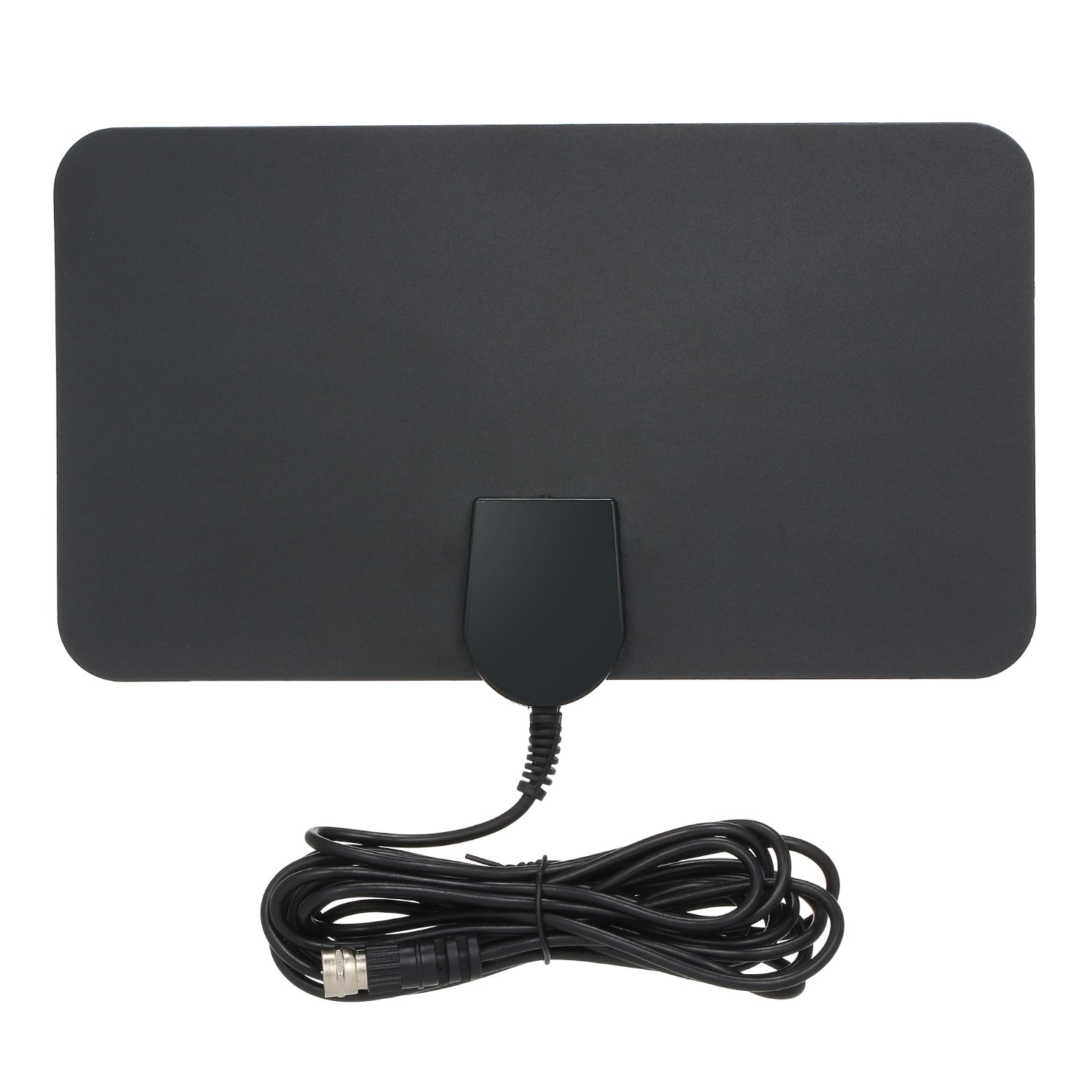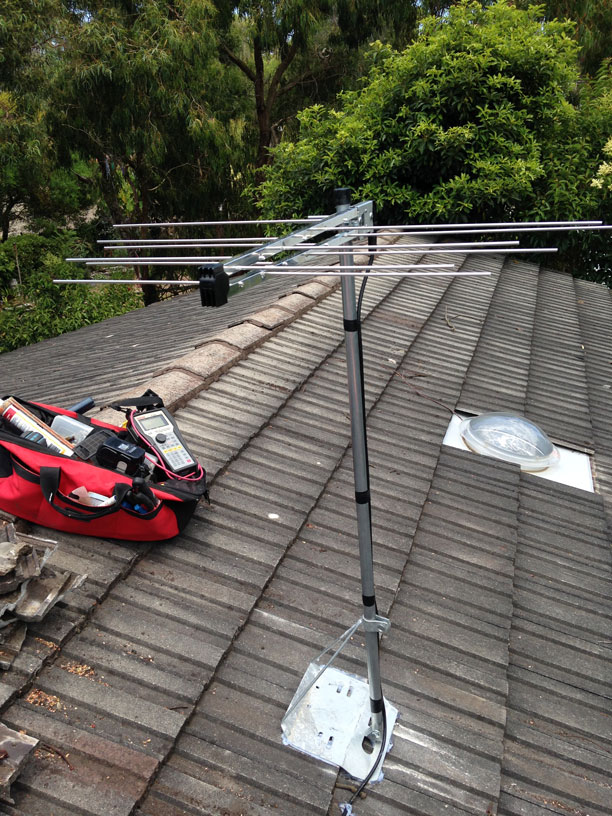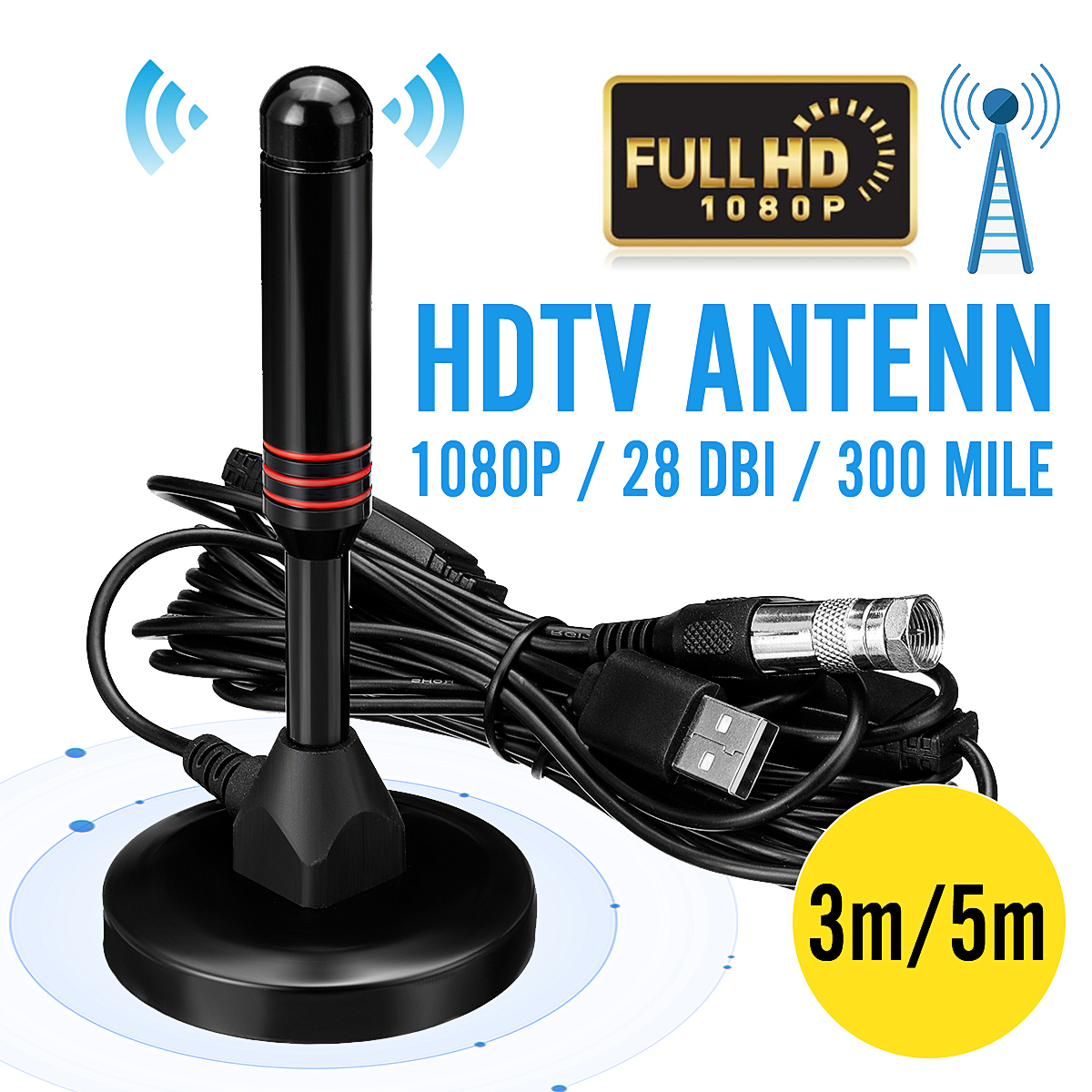

Second, the rabbit ears work best only if resonant at the TV channel being received. If the desired TV signals come from the same direction, this directionality may help reduce noise pickup. If rabbit ears work so well, why consider a much more expensive antenna such as the SS-3000? First, the SS-3000 offers some directionality. Specified VHF gain of the HD-1080 compared to a dipole ranges from –11 dB at channel 7 to zero dB at channel 13.

Other indoor antenna options from Winegard include the GS-2200, which at 46.5 inches should more closely match rabbit ear performance and the HD-1080, a two-bay bow-tie with extended elements for VHF. This will make a difference in reception. The SS-3000 is only 26.75 inches long and from the pictures, it appears the driven element is smaller than that, so the negative gain at high VHF is understandable. It includes an amplifier that provides 7 to 10 dB gain over VHF and UHF channels with a noise figure of 1 dB or less. Unamplified gain is specified at –15 dB for channels 2 to 6, –5 dB for channels 7 to 13 and zero dB for UHF channels. Its top performing indoor antenna is the SS-3000. Winegard's Indoor Antenna Model SS-3000 Winegard has taken steps to improve the VHF performance of its indoor antennas and offers some interesting options. How many indoor antennas, other than rabbit ears, have you seen with a linear dimension greater than 30 inches? There are smaller indoor antennas without additional elements (directors or reflectors) that are able to receive VHF broadcasts, such as the RCA ANT-1500, which can't match the "gain" of a set of rabbit ears without amplifiers. The combined length of the two elements ranges from about 31.75 inches at channel 7 to 26.375 inches at channel 13.


Given the space constraints on top of the TV set, it will be very difficult to obtain more signal from one of the fancier passive indoor VHF antennas than what you'd obtain from a set of rabbit ears, assuming they adjusted to the correct length for the VHF channel being viewed. Noise can come from many sources in the house-appliances, microprocessors (in computers and other devices), video displays, and the increasingly popular energy efficient compact fluorescent lamps. The two major issues affecting indoor VHF reception are low gain antennas (usually "rabbit ear" dipoles") and noise. They must do this with effective radiated power capped well below that of UHF TV stations-160 kW versus 1,000 kW. According to the analysis Bill Meintel presented at the IEEE Broadcast Technology Symposium last October, VHF stations need a field strength close to or stronger than that of UHF TV stations for indoor TV reception, (see "2008 IEEE Broadcast Symposium in Review," Dec. My focus will be on high-band VHF channels, as few stations will be using low-band VHF channels post-transition. This month, I'll look at reception options for VHF TV, both indoor and outdoor, new Gray-Hoverman antenna developments, and take a look back at some VHF antennas that worked well in the 1950s. Fortunately, rescanning solved many complaints, but not all. Some have already made the transition and found viewers that were receiving DTV on UHF previously had problems with reception on VHF channels. Many TV stations with high-band VHF analog channels are moving their DTV transmissions to those channels after analog is shut down on June 12.


 0 kommentar(er)
0 kommentar(er)
